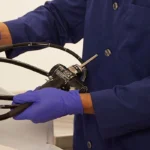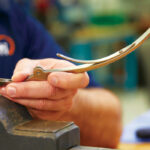COVID-19 has had a profound impact on patient volumes at healthcare facilities across the nation and has hit operating rooms (ORs) particularly hard. Many health systems suspended elective surgical procedures, and the fear of contracting COVID-19 led many patients to avoid surgical treatment. This resulted in a near 70% reduction in elective surgical procedures nationwide in the last three months. As the acute risks of overwhelmed critical care capacity begin to ebb, hospitals — and patients — are eager to resume elective procedures. Managing the rapid ramp-up of surgical volume to regain lost revenue is a challenge, but providers also need to focus even more on how to lower cost per case in order to regain lost margin on surgical services.
To get a better sense of how hospitals are looking to ramp up their elective surgical procedures and lower costs, we reached out to OR staff across the country to capture how they are planning for the weeks and months ahead.
Key Focus: Maximizing OR Throughput to Handle Surging Surgical Volumes
Hospitals expect elective surgeries to increase to 80% of pre-COVID-19 levels by the end of 2020. How quickly surgical volume rebounds is still unknown, but even if patients return en masse for elective surgical cases in the months ahead, hospitals will face the challenge of rapidly mobilizing the resources, staff and space needed to meet this potential surge in case volumes. Surgical equipment availability – including surgical lasers and the technologists needed to operate them safely – will play a large part in this.
Surgical lasers are some of the highest-value tools in the hospital, delivering high-revenue treatments. But the complexities of scheduling, operating and meeting increasingly stringent compliance requirements for surgical lasers can lead to breakdowns and inefficiencies — creating the bottlenecks that operating rooms are trying to avoid.
To that end, here are five strategies to help optimize OR throughput by focusing on the availability and utilization of surgical lasers and other critical surgical equipment:
- Stack cases based on specialized surgical equipment: OR managers know that case stacking is the most efficient means to mobilize all of the factors that play a role in a surgical procedure and can get patients through the operating room faster. Taking an equipment-focused approach to case stacking can yield greater efficiencies:
- Grouping together cases that require lasers and other specialized surgical equipment minimizes the need to set up and tear down different lasers and equipment for different patients. This can save hours of valuable time.
- This approach also yields efficiencies with physician and technician time. We all know that different physicians and laser technicians have different credentials and skills. This equipment-focused approach to case stacking reduces the need to adjust the room or patient schedule based on the available physician or laser technician.
- Don’t buy more — rent to meet variable case demands: Surgical lasers are high-value tools — but they’re also expensive to purchase and maintain. ORs know they need to have flexible and reliable access to a broad range of laser technologies in order to handle the ebbs and flows of surgical volume in the coming months. But rather than buying additional lasers to handle peak case load, savvy hospitals are turning to trusted rental providers as a smarter, more cost-effective option:
- Local surgical laser rental providers can deliver both the equipment and technologists needed to quickly scale services without having to buy more resources.
- Even if facility-owned equipment can handle surging caseloads, many hospitals do not have enough certified laser operators to meet the expected uptick in case volumes. Leading rental providers offer technician-only services to offer a flexible labor option to cover any temporary staffing gaps to operate your owned surgical lasers.
- Cut costs on your surgical equipment maintenance and repair: Surgical lasers are just one type of specialized surgical equipment that can become a bottleneck as surgical caseloads ramp up. Ensuring that other types of surgical equipment and instruments — such as endoscopes, ophthalmic, endo/lap, etc. — are maintained and repaired quickly to meet a surge of cases will be critical. Keep in mind:
- Surgical equipment maintenance and repair is no small budget line item. While having the original equipment manufacturer (OEM) provide repair and maintenance service is one option, independent service organizations (ISOs) can provide the same quality while offering meaningful costs savings.
- Many of these ISOs provide mobile repair options — arriving onsite at your facility to service and/or repair instruments to make sure your OR doesn’t experience any delays. Typically, this includes providing any necessary loaners while equipment is being refurbished.
- Keep nurses focused on providing patient care: Many hospitals rely on nurses to stand in as laser technicians for surgical cases. This presents a number of problems — which are only intensified by the challenges of the COVID-19 pandemic:
- Laser operators are required to be trained and certified on every procedure type by surgical laser technology. Often, nurses don’t meet the required credentialing to operate lasers for surgical cases. This is not only a major compliance risk; it also creates risk for a nurse’s professional license when they are not certified to operate a surgical laser. Even if OR nurses are credentialed to operate the laser, this is not the best use of their unique skillset.
- More hospitals are leveraging on-demand support from certified and highly experienced third-party technicians to pull nurses out of laser tech responsibility. This also relieves nurses of the time-consuming burdens of case support, including set-up, tear down and laser log documentation. This approach can give nurses approximately 1.5 hours per case, on average, of time back — which can be spent providing patient care.
- Go to the patients — mobilize lasers across multiple sites: Laser utilization is highly variable even during a normal course of business. Surgical lasers can sit unused for extended periods of time in a given facility if there are no planned cases. At the same time, a member site may have a backlog of procedures because they do not have that technology available — or do not have the certified technicians to support the case. Addressing these supply/demand misalignments can prove difficult for health systems to manage on their own — both because of the complexities of schedule optimization and the complexities of location-specific budgeting and billing.
Leading providers of surgical laser rental and support can help hospitals mobilize surgical lasers and technicians across adjacent locations — or to regional facilities — delivering a cost-effective solution to meet variable case demands. Health systems and IDNs are increasingly adopting this approach and successfully increasing utilization of these high-value, high-revenue tools.
Looking Forward: Adapting to a “New Normal” in the OR
The COVID-19 crisis continues to challenge our national healthcare system in new ways. As the acute risks and restrictions from the pandemic subside, hospitals and clinics will face an even larger and more complex challenge: dealing with rapidly rising patient volumes — while seeking to reduce their cost per case while not compromising infection control and protections for patients and staff.
Agiliti is proud to partner with hospitals around the country in tackling this challenge head-on. To help meet the increase in elective surgical procedures, we’re strategically positioned to provide:
- Surgical laser rentals and on-demand certified laser technicians across the U.S.
- Surgical instruments and endoscopic equipment repair and maintenance through our Mobile Instruments Service and Repair business
- Repair and maintenance of common surgical equipment, including anesthesia devices, ultrasound, surgical tables, lights and more.
Agiliti also provides hospitals a comprehensive range of rental, clinical engineering support and onsite medical equipment management to help ensure clinical teams have the right equipment when and where it’s needed most.
Learn more by contacting an Agiliti equipment expert today.










